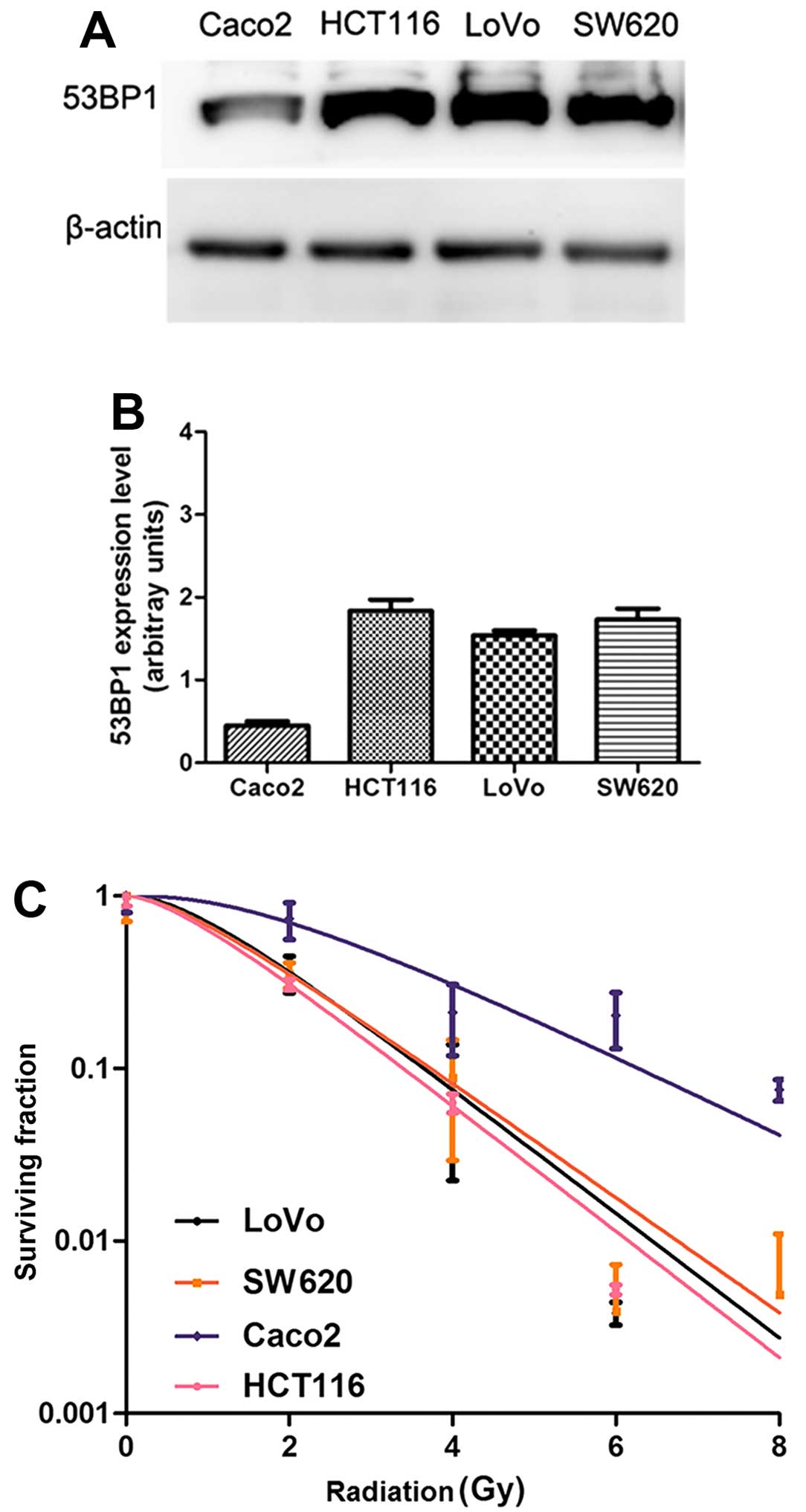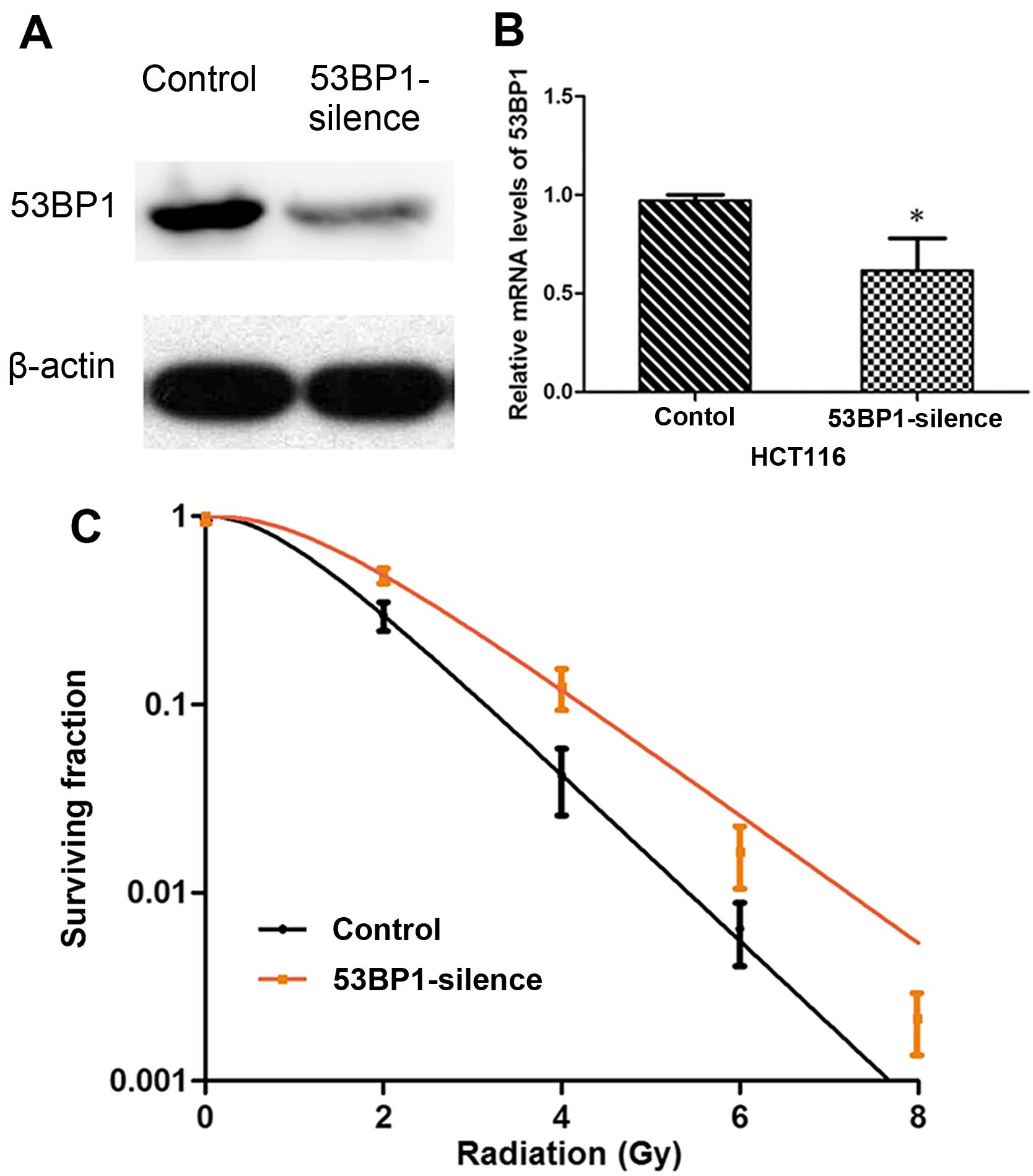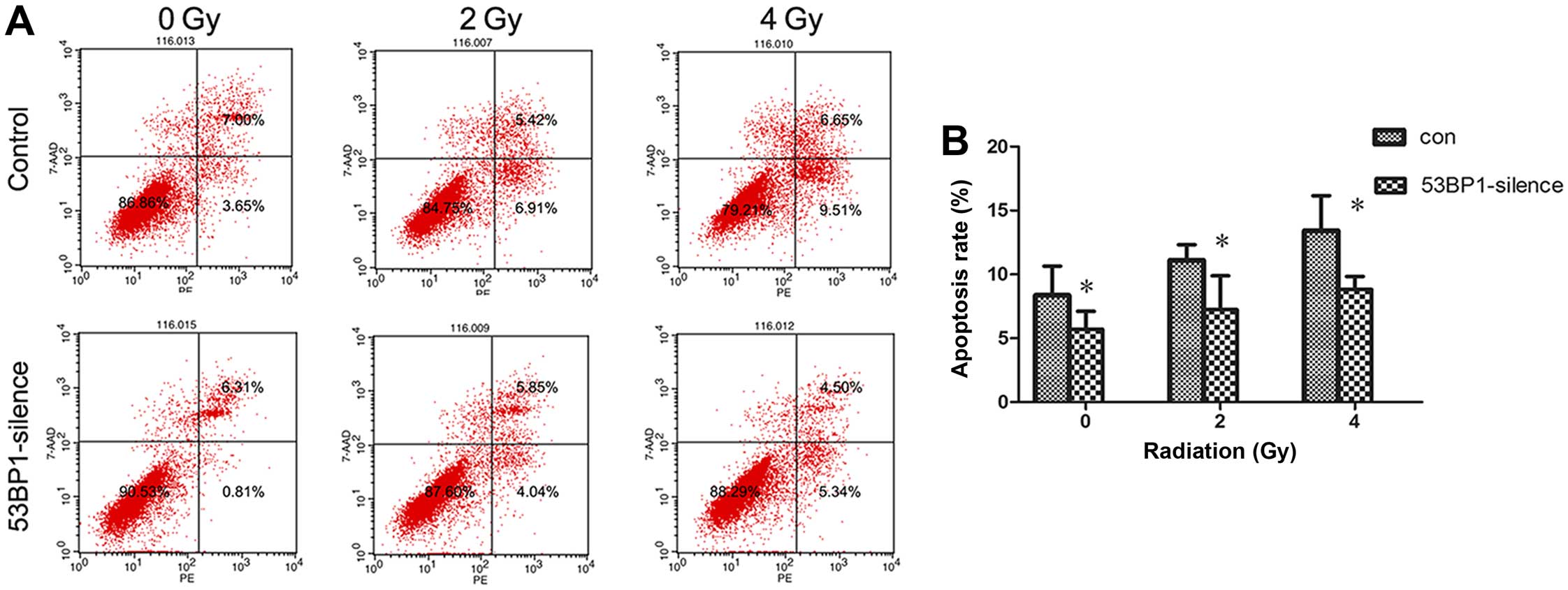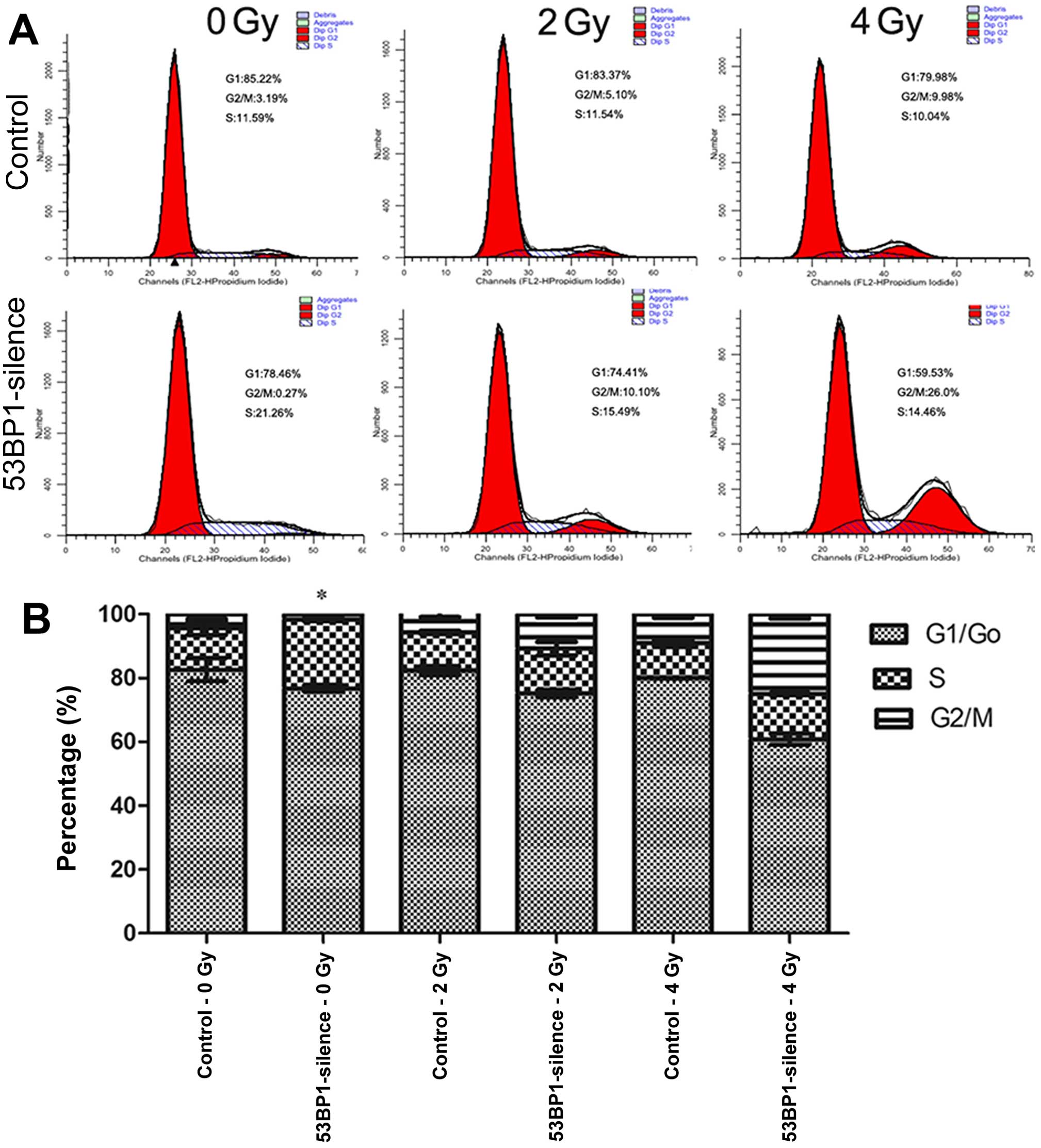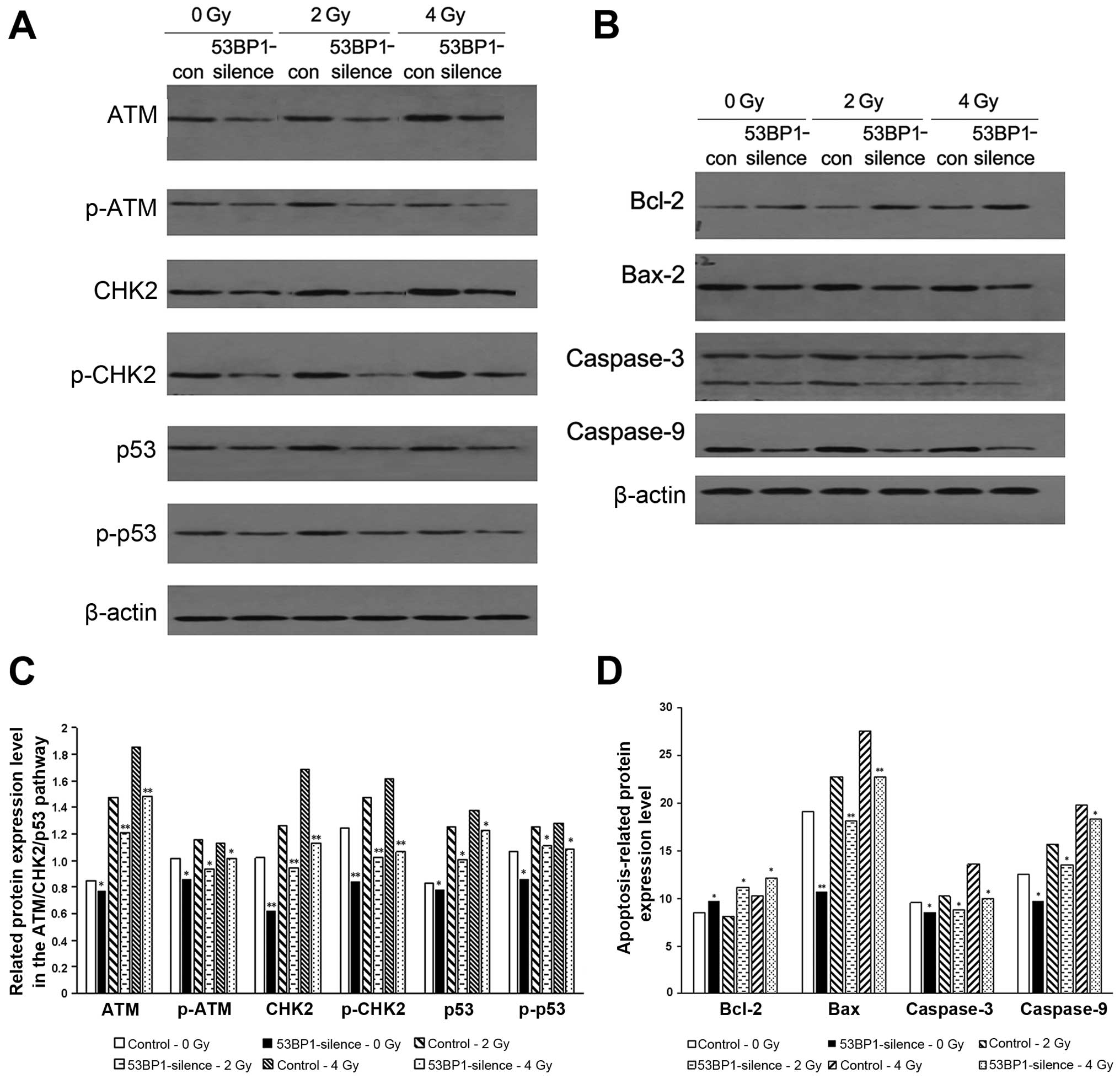|
1
|
Shin SJ, Yoon HI, Kim NK, Lee KY, Min BS,
Ahn JB, Keum KC and Koom WS: Upfront systemic chemotherapy and
preoperative short-course radiotherapy with delayed surgery for
locally advanced rectal cancer with distant metastases. Radiat
Oncol. 6:992011. View Article : Google Scholar : PubMed/NCBI
|
|
2
|
Zhang T, Liang ZW, Han J, Bi JP, Yang ZY
and Ma H: Double-arc volumetric modulated therapy improves dose
distribution compared to static gantry IMRT and 3D conformal
radiotherapy for adjuvant therapy of gastric cancer. Radiat Oncol.
10:1142015. View Article : Google Scholar : PubMed/NCBI
|
|
3
|
Wang M, Kern AM, Hülskötter M, Greninger
P, Singh A, Pan Y, Chowdhury D, Krause M, Baumann M, Benes CH, et
al: EGFR-mediated chromatin condensation protects KRAS-mutant
cancer cells against ionizing radiation. Cancer Res. 74:2825–2834.
2014. View Article : Google Scholar : PubMed/NCBI
|
|
4
|
Di Micco R, Fumagalli M, Cicalese A,
Piccinin S, Gasparini P, Luise C, Schurra C, Garre’ M, Nuciforo PG,
Bensimon A, et al: Oncogene-induced senescence is a DNA damage
response triggered by DNA hyper-replication. Nature. 444:638–642.
2006. View Article : Google Scholar : PubMed/NCBI
|
|
5
|
Bartkova J, Rezaei N, Liontos M,
Karakaidos P, Kletsas D, Issaeva N, Vassiliou LV, Kolettas E,
Niforou K, Zoumpourlis VC, et al: Oncogene-induced senescence is
part of the tumorigenesis barrier imposed by DNA damage
checkpoints. Nature. 444:633–637. 2006. View Article : Google Scholar : PubMed/NCBI
|
|
6
|
Carr SM, Munro S, Zalmas LP, Fedorov O,
Johansson C, Krojer T, Sagum CA, Bedford MT, Oppermann U and La
Thangue NB: Lysine methylation-dependent binding of 53BP1 to the
pRb tumor suppressor. Proc Natl Acad Sci USA. 111:11341–11346.
2014. View Article : Google Scholar : PubMed/NCBI
|
|
7
|
Bouwman P, Aly A, Escandell JM, Pieterse
M, Bartkova J, van der Gulden H, Hiddingh S, Thanasoula M, Kulkarni
A, Yang Q, et al: 53BP1 loss rescues BRCA1 deficiency and is
associated with triple-negative and BRCA-mutated breast cancers.
Nat Struct Mol Biol. 17:688–695. 2010. View Article : Google Scholar : PubMed/NCBI
|
|
8
|
Nuciforo PG, Luise C, Capra M, Pelosi G
and d’Adda di Fagagna F: Complex engagement of DNA damage response
pathways in human cancer and in lung tumor progression.
Carcinogenesis. 28:2082–2088. 2007. View Article : Google Scholar : PubMed/NCBI
|
|
9
|
Neboori HJ, Haffty BG, Wu H, Yang Q, Aly
A, Goyal S, Schiff D, Moran MS, Golhar R, Chen C, et al: Low p53
binding protein 1 (53BP1) expression is associated with increased
local recurrence in breast cancer patients treated with
breast-conserving surgery and radiotherapy. Int J Radiat Oncol Biol
Phys. 83:e677–e683. 2012. View Article : Google Scholar : PubMed/NCBI
|
|
10
|
Squatrito M, Vanoli F, Schultz N, Jasin M
and Holland EC: 53BP1 is a haploinsufficient tumor suppressor and
protects cells from radiation response in glioma. Cancer Res.
72:5250–5260. 2012. View Article : Google Scholar : PubMed/NCBI
|
|
11
|
Ma H, Bi J, Liu T, Ke Y, Zhang S and Zhang
T: Icotinib hydrochloride enhances the effect of radiotherapy by
affecting DNA repair in colorectal cancer cells. Oncol Rep.
33:1161–1170. 2015.PubMed/NCBI
|
|
12
|
Shi Y, Felley-Bosco E, Marti TM, Orlowski
K, Pruschy M and Stahel RA: Starvation-induced activation of
ATM/Chk2/p53 signaling sensitizes cancer cells to cisplatin. BMC
Cancer. 12:5712012. View Article : Google Scholar : PubMed/NCBI
|
|
13
|
Chung YM, Park SH, Tsai WB, Wang SY, Ikeda
MA, Berek JS, Chen DJ and Hu MC: FOXO3 signalling links ATM to the
p53 apoptotic pathway following DNA damage. Nat Commun. 3:10002012.
View Article : Google Scholar : PubMed/NCBI
|
|
14
|
Bartkova J, Horejsí Z, Sehested M, Nesland
JM, Rajpert-De Meyts E, Skakkebaek NE, Stucki M, Jackson S, Lukas J
and Bartek J: DNA damage response mediators MDC1 and 53BP1:
Constitutive activation and aberrant loss in breast and lung
cancer, but not in testicular germ cell tumours. Oncogene.
26:7414–7422. 2007. View Article : Google Scholar : PubMed/NCBI
|
|
15
|
Morales JC, Franco S, Murphy MM, Bassing
CH, Mills KD, Adams MM, Walsh NC, Manis JP, Rassidakis GZ, Alt FW,
et al: 53BP1 and p53 synergize to suppress genomic instability and
lymphomagenesis. Proc Natl Acad Sci USA. 103:3310–3315. 2006.
View Article : Google Scholar : PubMed/NCBI
|
|
16
|
Ausborn NL, Wang T, Wentz SC, Washington
MK, Merchant NB, Zhao Z, Shyr Y, Chakravarthy AB and Xia F: 53BP1
expression is a modifier of the prognostic value of lymph node
ratio and CA 19-9 in pancreatic adenocarcinoma. BMC Cancer.
13:1552013. View Article : Google Scholar : PubMed/NCBI
|
|
17
|
Squatrito M, Brennan CW, Helmy K, Huse JT,
Petrini JH and Holland EC: Loss of ATM/Chk2/p53 pathway components
accelerates tumor development and contributes to radiation
resistance in gliomas. Cancer Cell. 18:619–629. 2010. View Article : Google Scholar : PubMed/NCBI
|
|
18
|
Ward IM, Difilippantonio S, Minn K,
Mueller MD, Molina JR, Yu X, Frisk CS, Ried T, Nussenzweig A and
Chen J: 53BP1 cooperates with p53 and functions as a
haploinsufficient tumor suppressor in mice. Mol Cell Biol.
25:10079–10086. 2005. View Article : Google Scholar : PubMed/NCBI
|
|
19
|
Gorgoulis VG, Vassiliou LV, Karakaidos P,
Zacharatos P, Kotsinas A, Liloglou T, Venere M, Ditullio RA Jr,
Kastrinakis NG, Levy B, et al: Activation of the DNA damage
checkpoint and genomic instability in human precancerous lesions.
Nature. 434:907–913. 2005. View Article : Google Scholar : PubMed/NCBI
|
|
20
|
Khanna A: DNA damage in cancer
therapeutics: A boon or a curse? Cancer Res. 75:2133–2138. 2015.
View Article : Google Scholar : PubMed/NCBI
|
|
21
|
Karanika S, Karantanos T, Li L, Corn PG
and Thompson TC: DNA damage response and prostate cancer: Defects,
regulation and therapeutic implications. Oncogene. 34:2815–2822.
2015. View Article : Google Scholar :
|
|
22
|
Tian H, Gao Z, Li H, Zhang B, Wang G,
Zhang Q, Pei D and Zheng J: DNA damage response - a double-edged
sword in cancer prevention and cancer therapy. Cancer Lett.
358:8–16. 2015. View Article : Google Scholar
|
|
23
|
Lai TC, Chow KC, Lin TY, Chiang IP, Fang
HY, Chen CY and Ho SP: Expression of 53BP1 as a cisplatin-resistant
marker in patients with lung adenocarcinomas. Oncol Rep.
24:321–328. 2010.PubMed/NCBI
|
|
24
|
Li X, Kong X, Kong X, Wang Y, Yan S and
Yang Q: 53BP1 sensitizes breast cancer cells to 5-fluorouracil.
PLoS One. 8:e749282013. View Article : Google Scholar : PubMed/NCBI
|
|
25
|
Clarke AR, Jones N, Pryde F, Adachi Y and
Sansom OJ: 53BP1 deficiency in intestinal enterocytes does not
alter the immediate response to ionizing radiation, but leads to
increased nuclear area consistent with polyploidy. Oncogene.
26:6349–6355. 2007. View Article : Google Scholar : PubMed/NCBI
|
|
26
|
Cao L, Xu X, Bunting SF, Liu J, Wang RH,
Cao LL, Wu JJ, Peng TN, Chen J, Nussenzweig A, et al: A selective
requirement for 53BP1 in the biological response to genomic
instability induced by Brca1 deficiency. Mol Cell. 35:534–541.
2009. View Article : Google Scholar : PubMed/NCBI
|
|
27
|
Han X, Zhang L, Chung J, Mayca Pozo F,
Tran A, Seachrist DD, Jacobberger JW, Keri RA, Gilmore H and Zhang
Y: UbcH7 regulates 53BP1 stability and DSB repair. Proc Natl Acad
Sci USA. 111:17456–17461. 2014. View Article : Google Scholar : PubMed/NCBI
|
|
28
|
Bi J, Huang A, Liu T, Zhang T and Ma H:
Expression of DNA damage checkpoint 53BP1 is correlated with
prognosis, cell proliferation and apoptosis in colorectal cancer.
Int J Clin Exp Pathol. 8:6070–6082. 2015.PubMed/NCBI
|
|
29
|
Sun CC, Chiu HT, Lin YF, Lee KY and Pang
JH: Y-27632, a ROCK inhibitor, promoted limbal epithelial cell
proliferation and corneal wound healing. PLoS One. 10:e01445712015.
View Article : Google Scholar : PubMed/NCBI
|
|
30
|
Li T, Shi HY, Hua YX, Gao C, Xia Q, Yang G
and Li B: Effects of allicin on the proliferation and cell cycle of
chondrocytes. Int J Clin Exp Pathol. 8:12525–12532. 2015.
|



